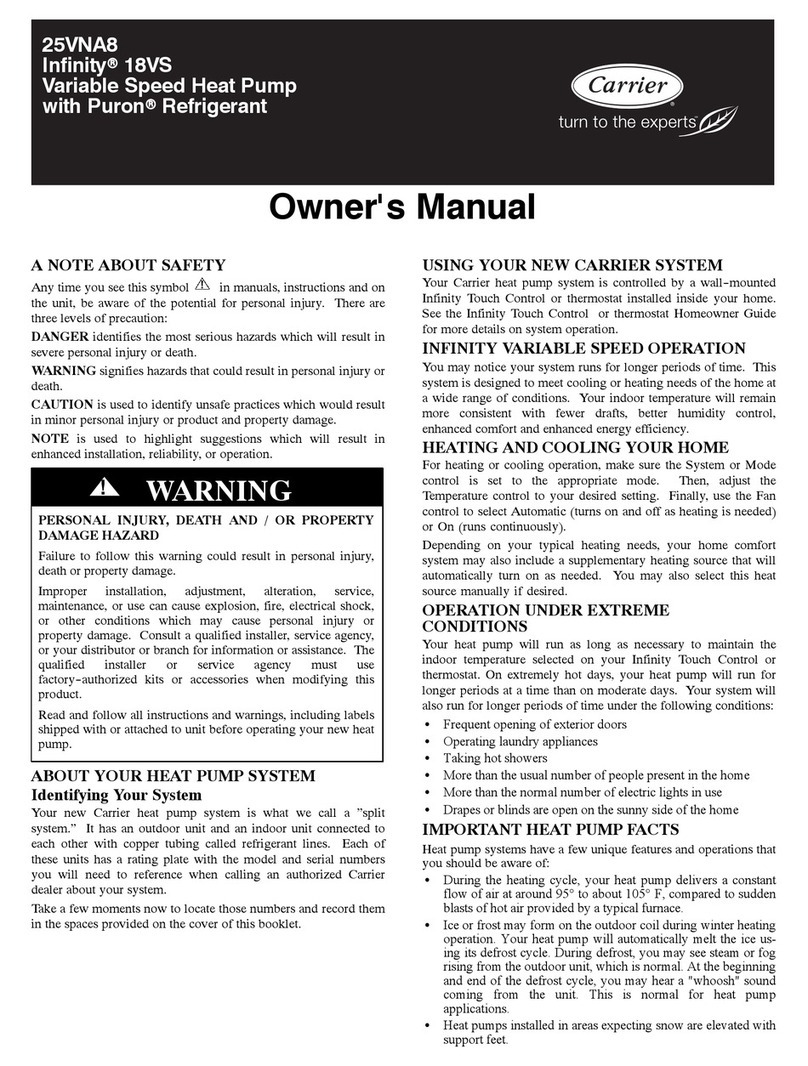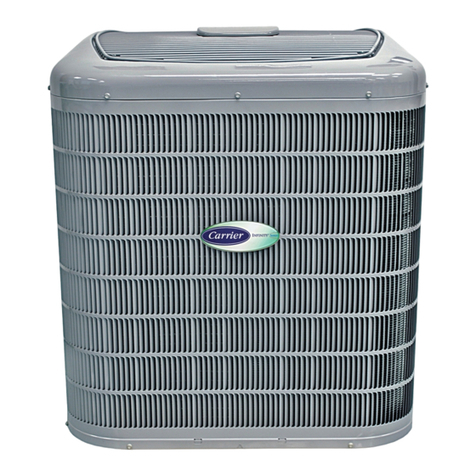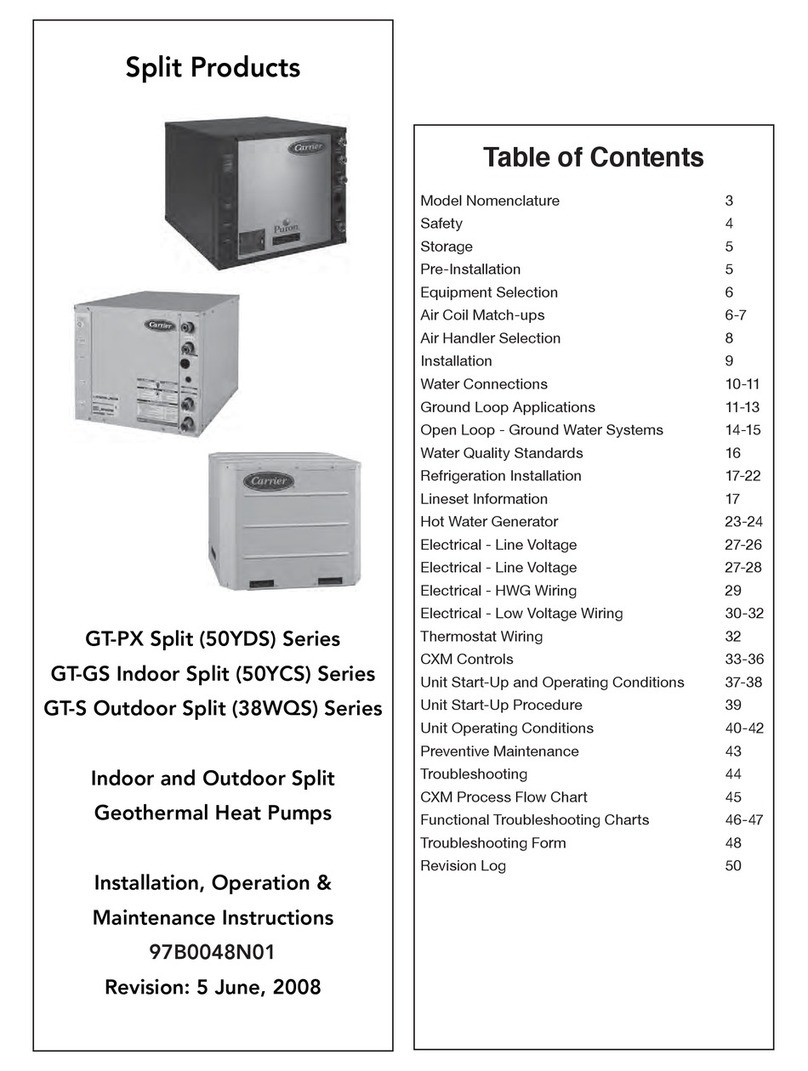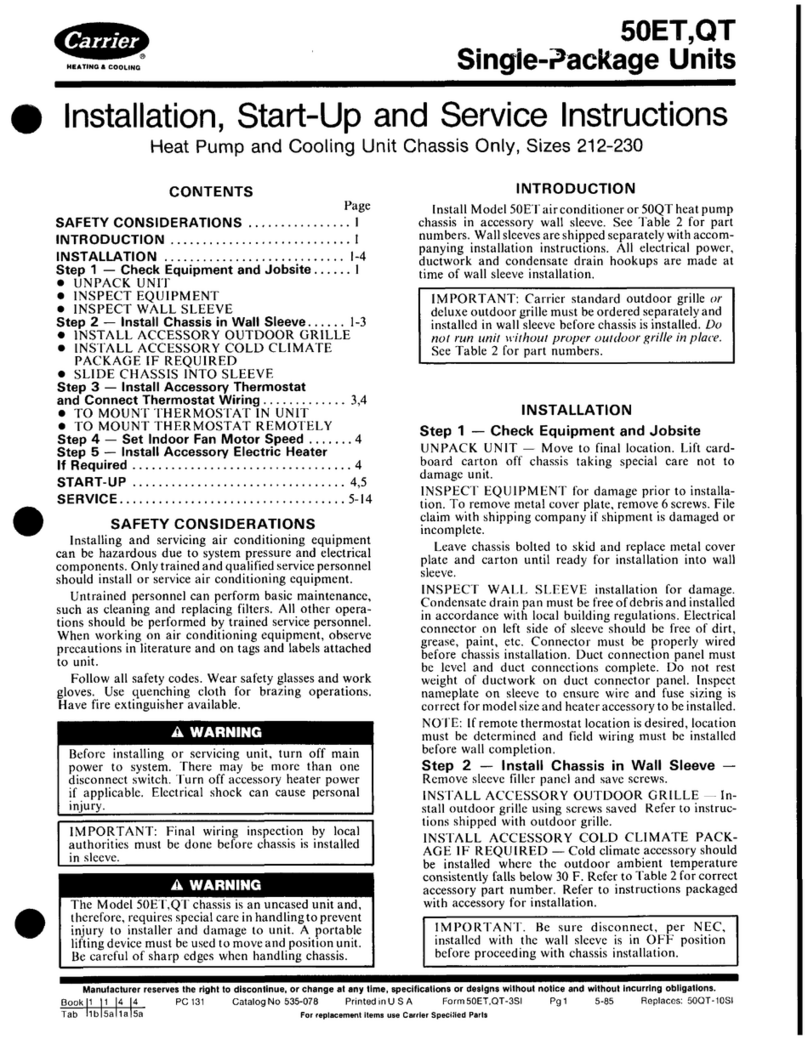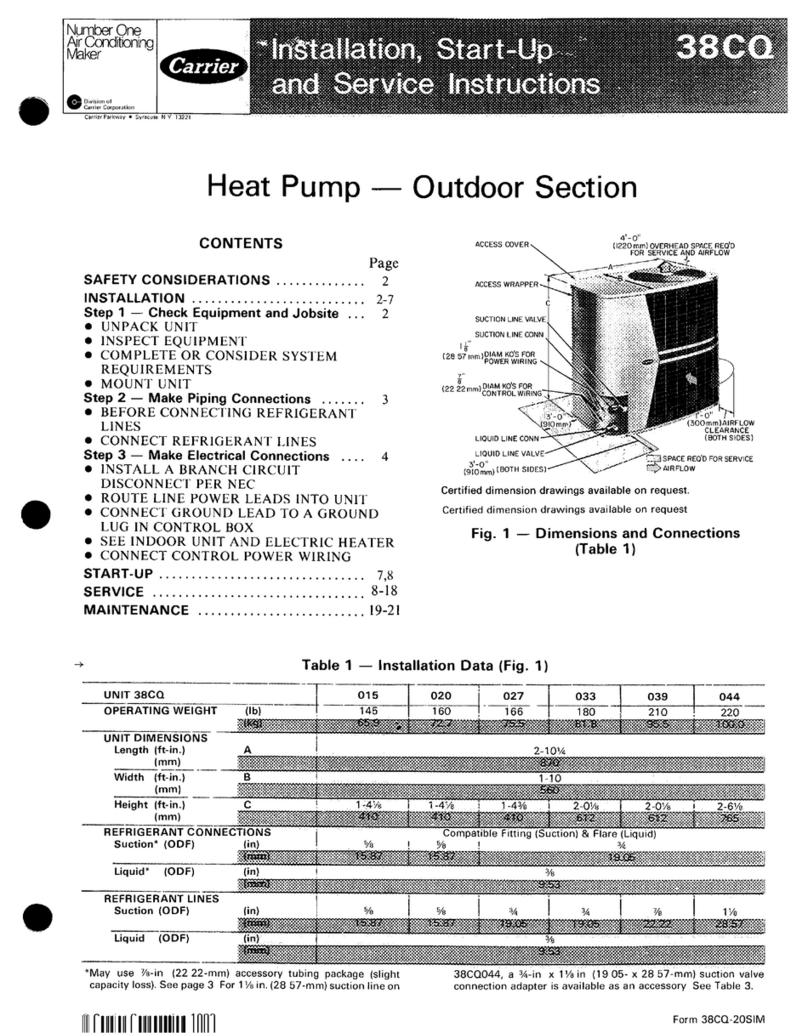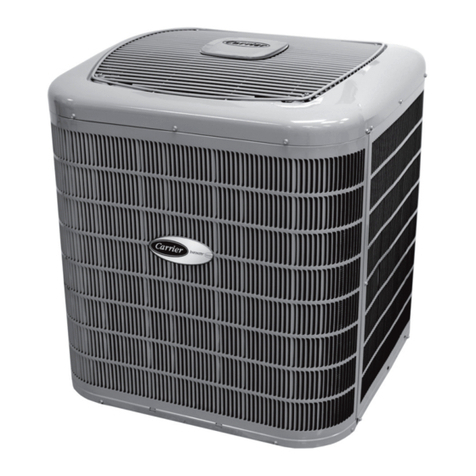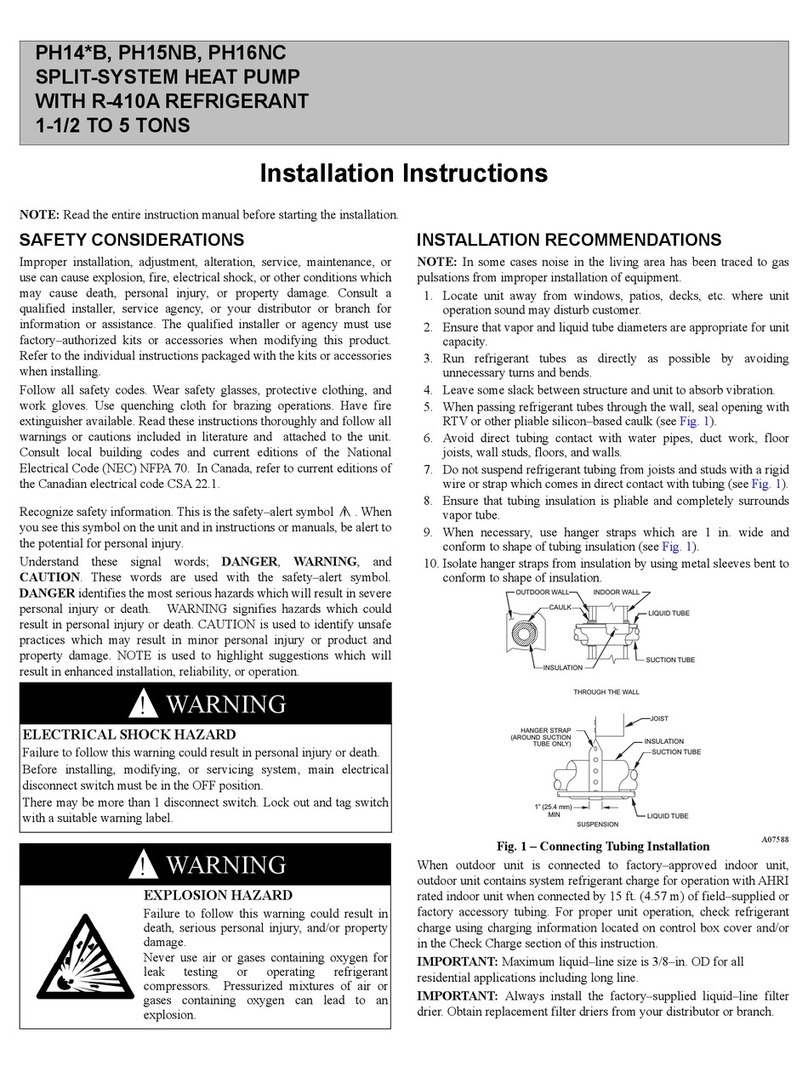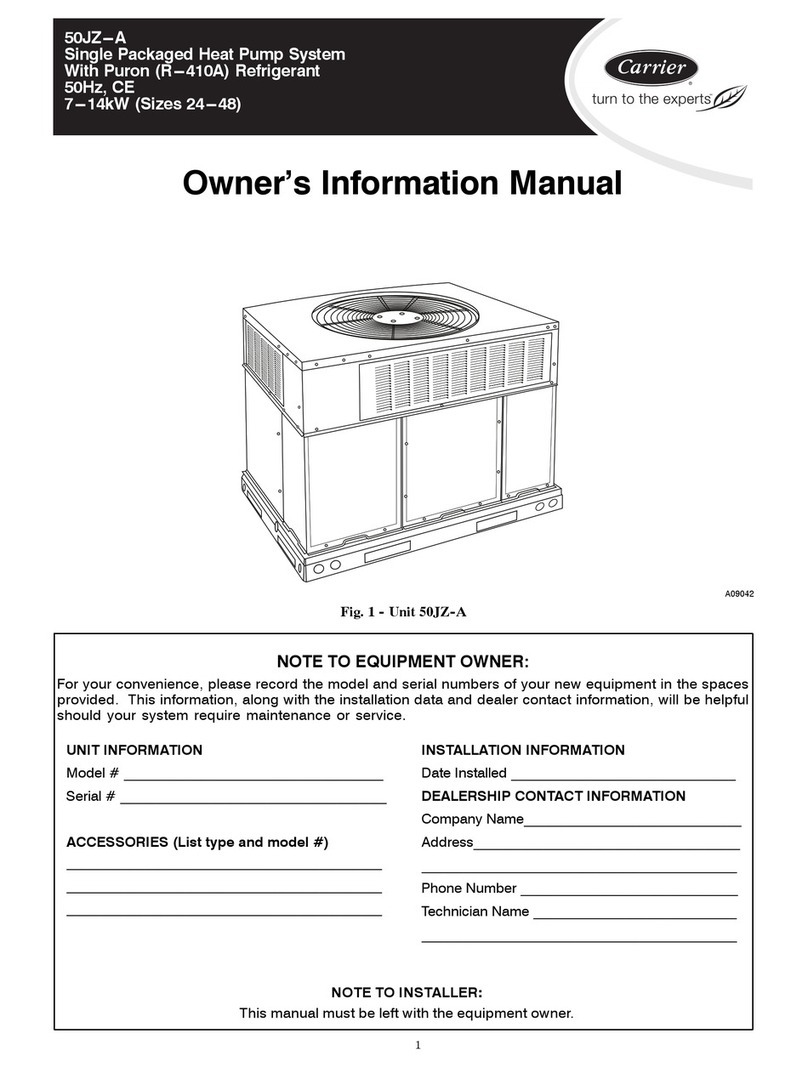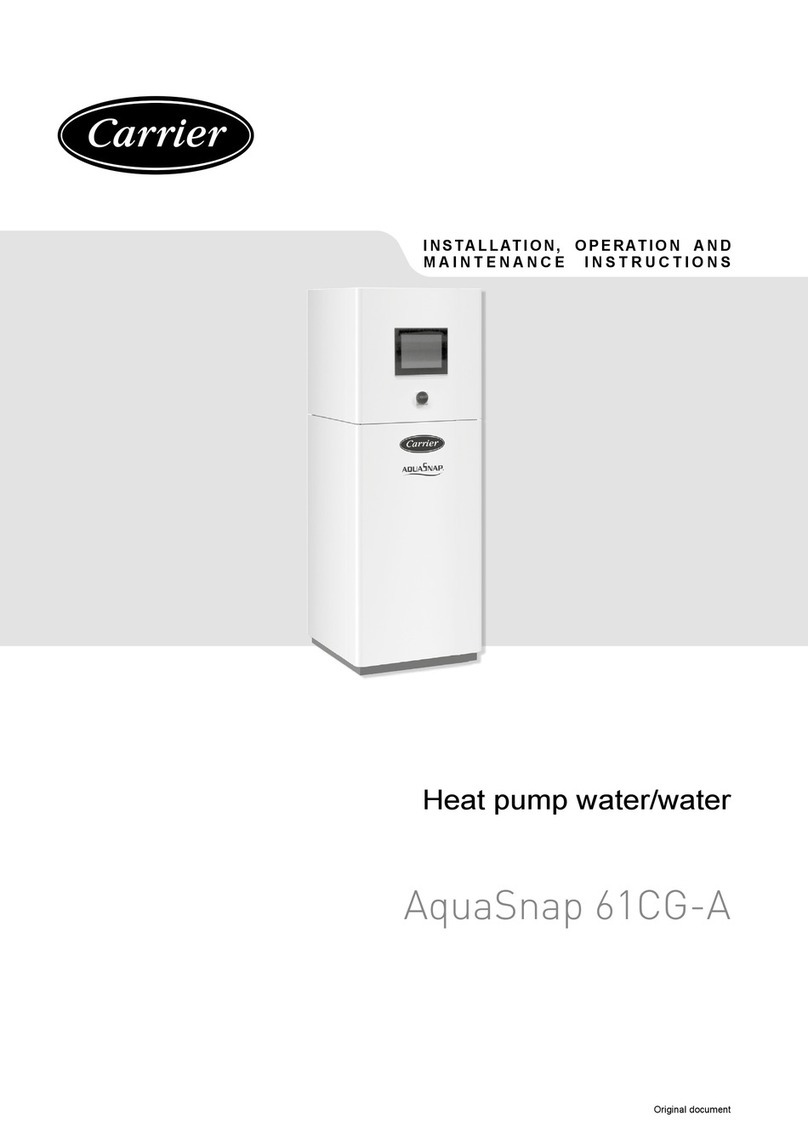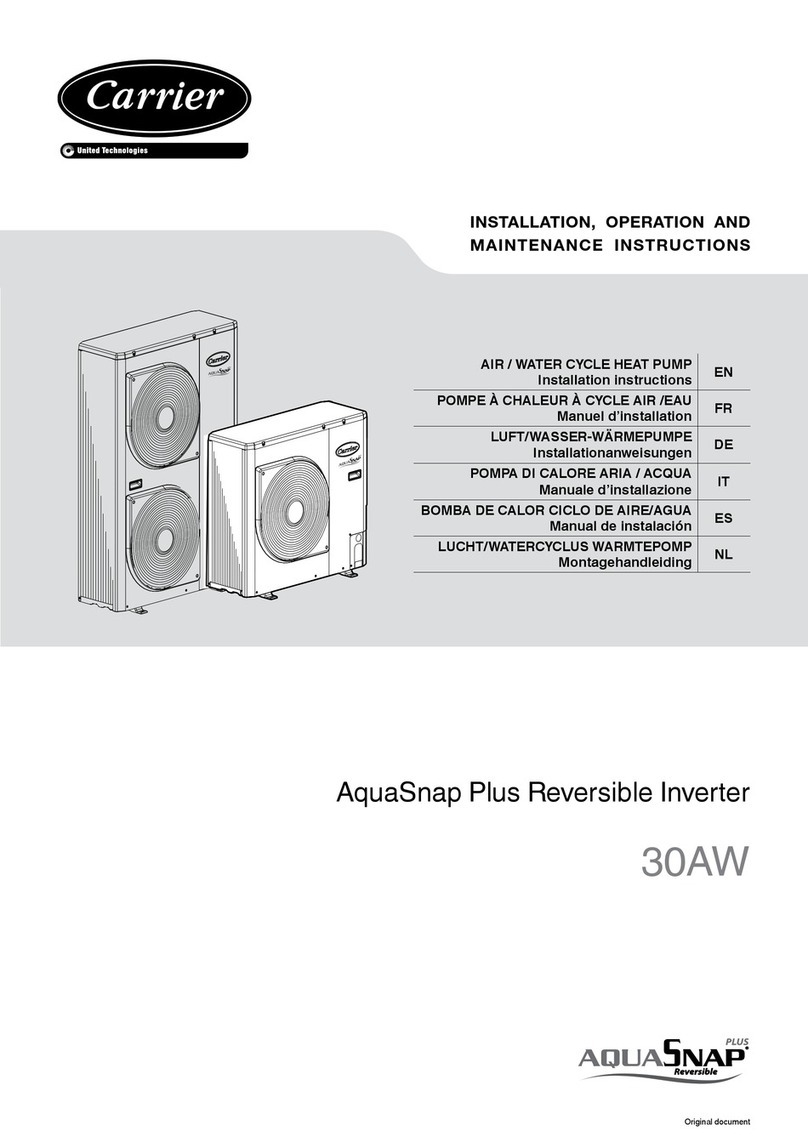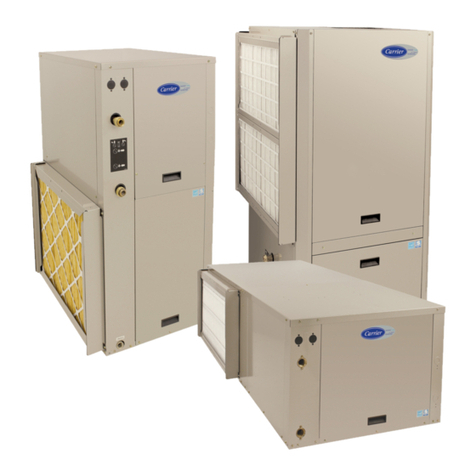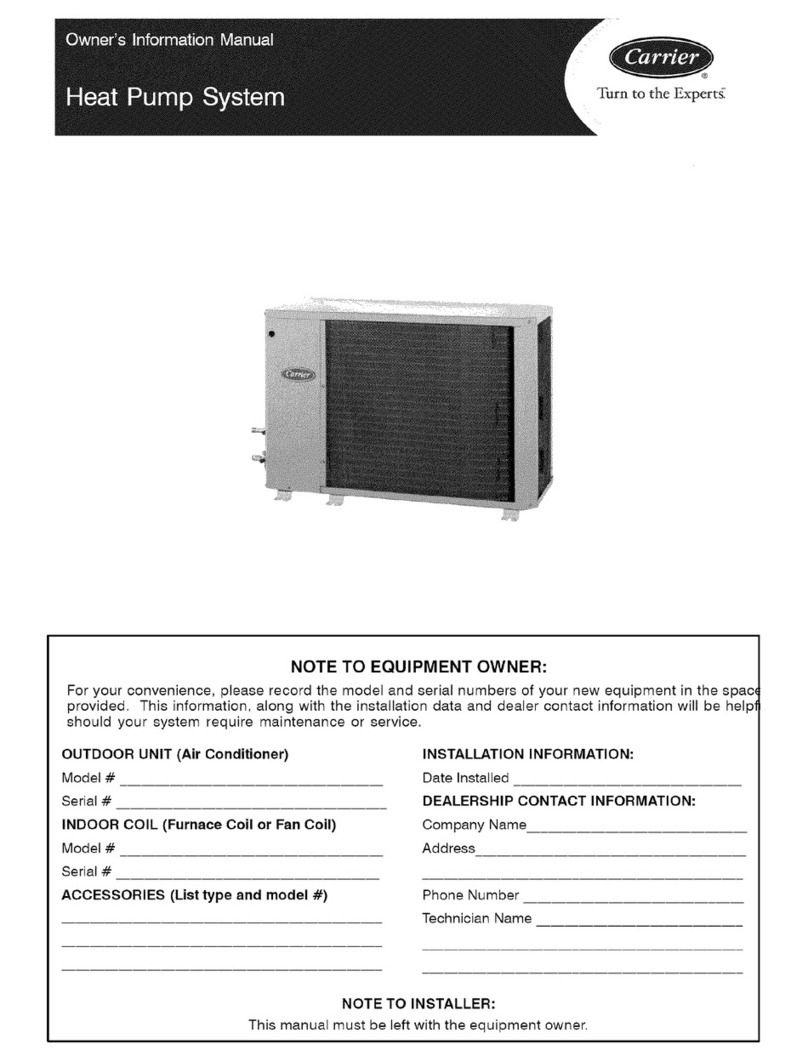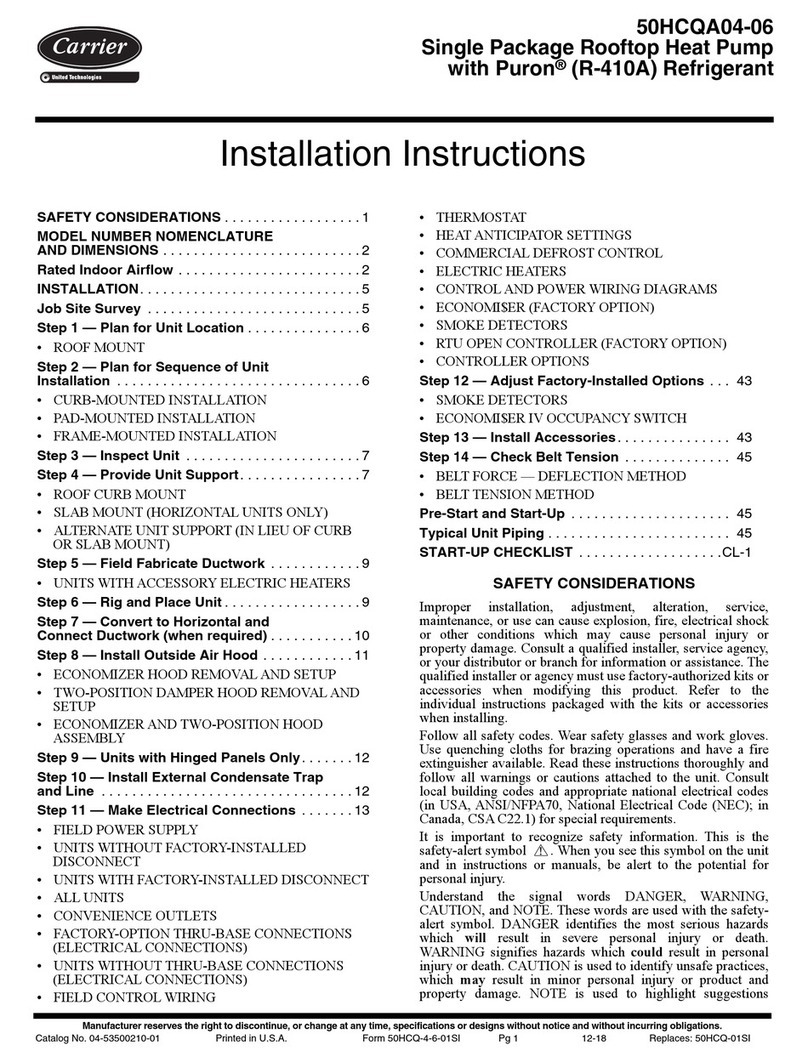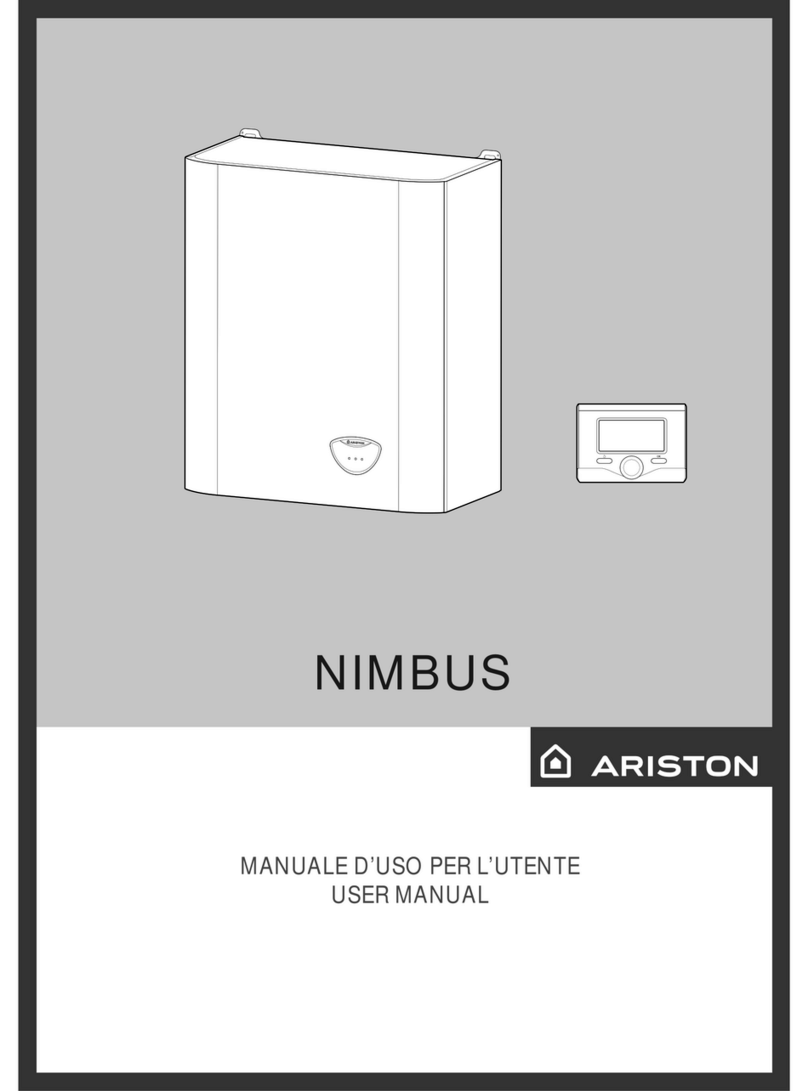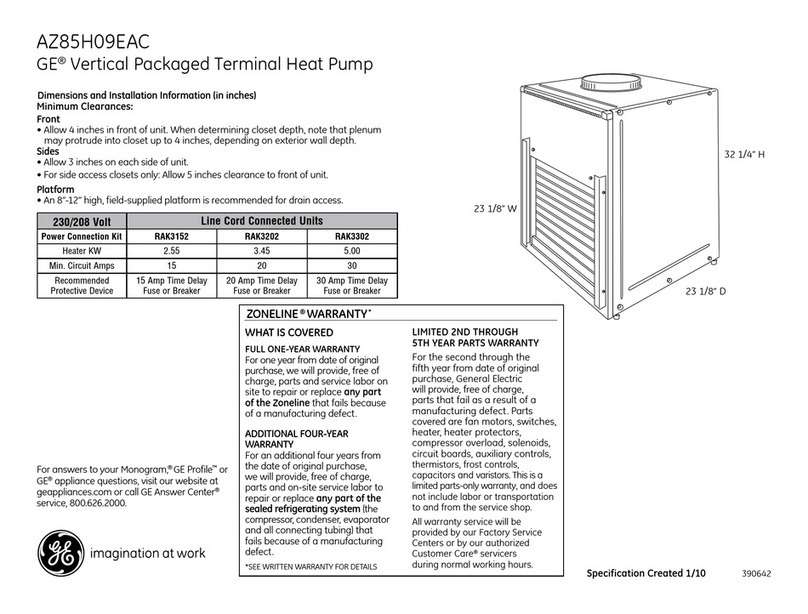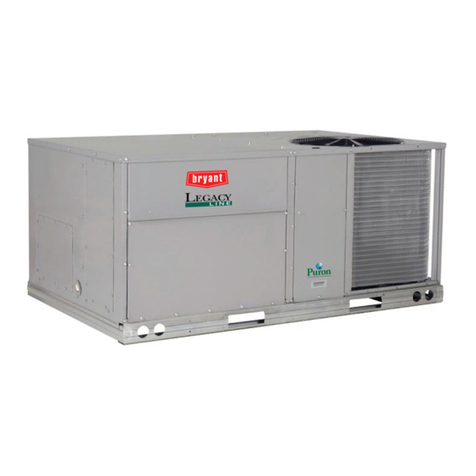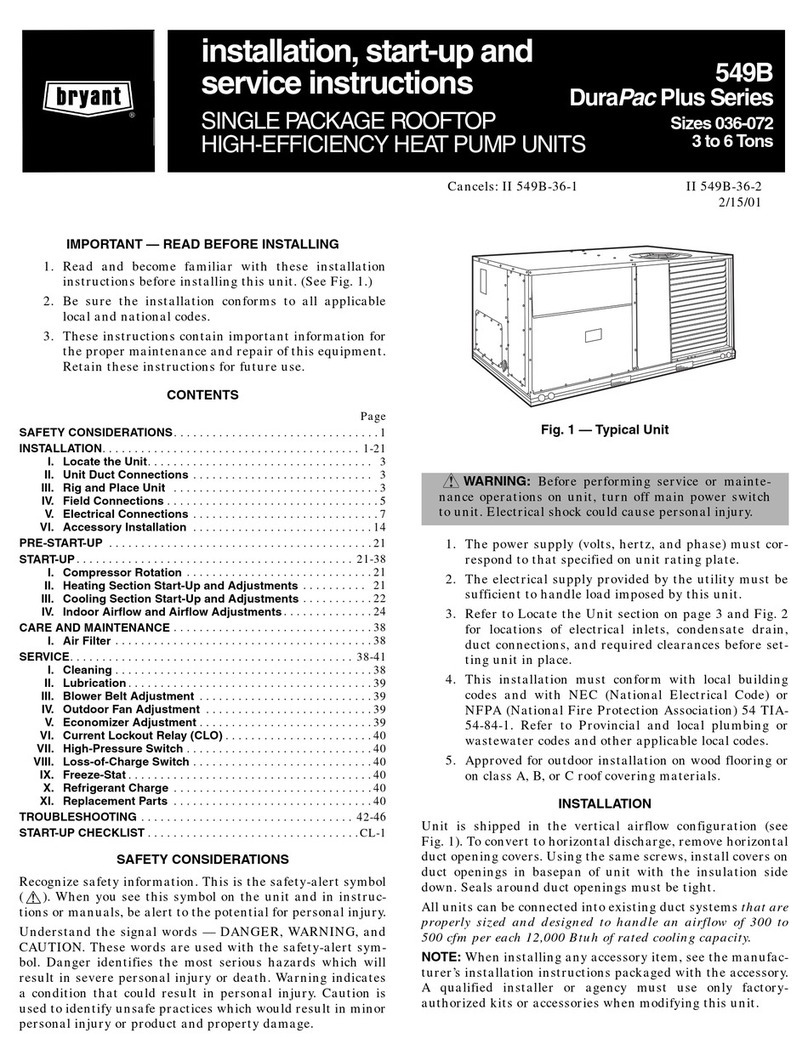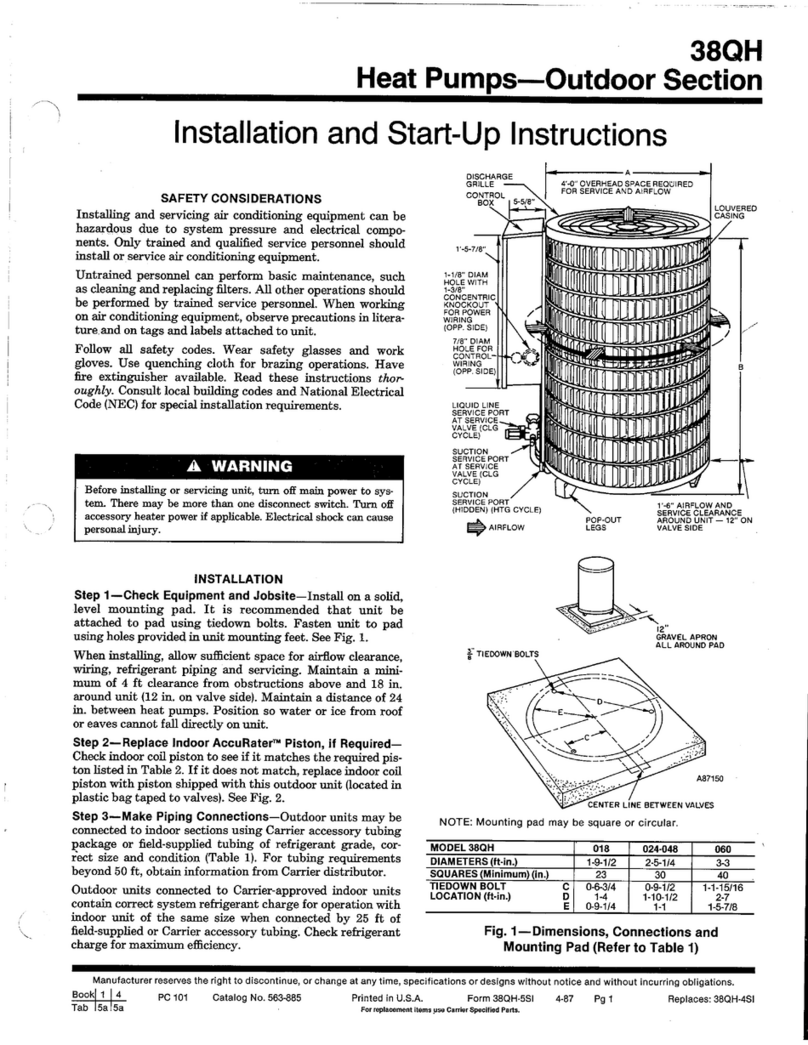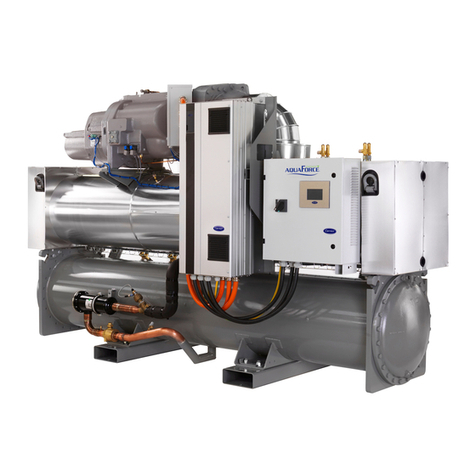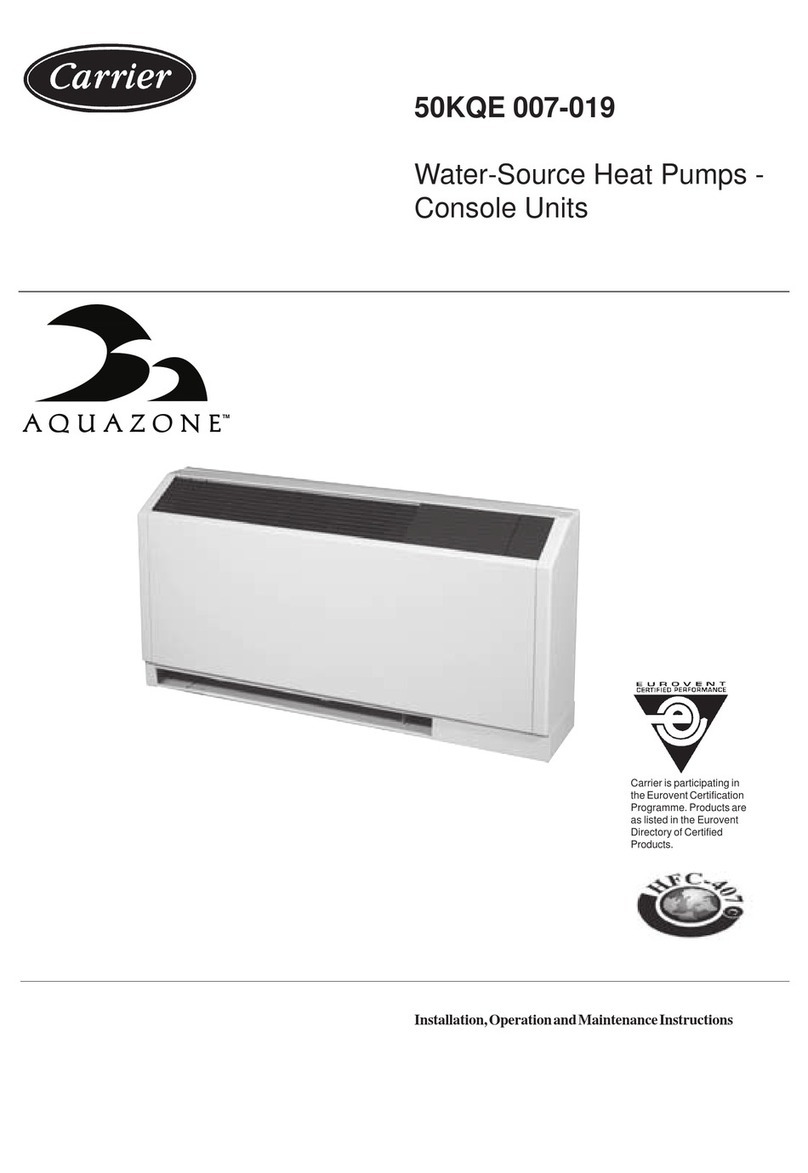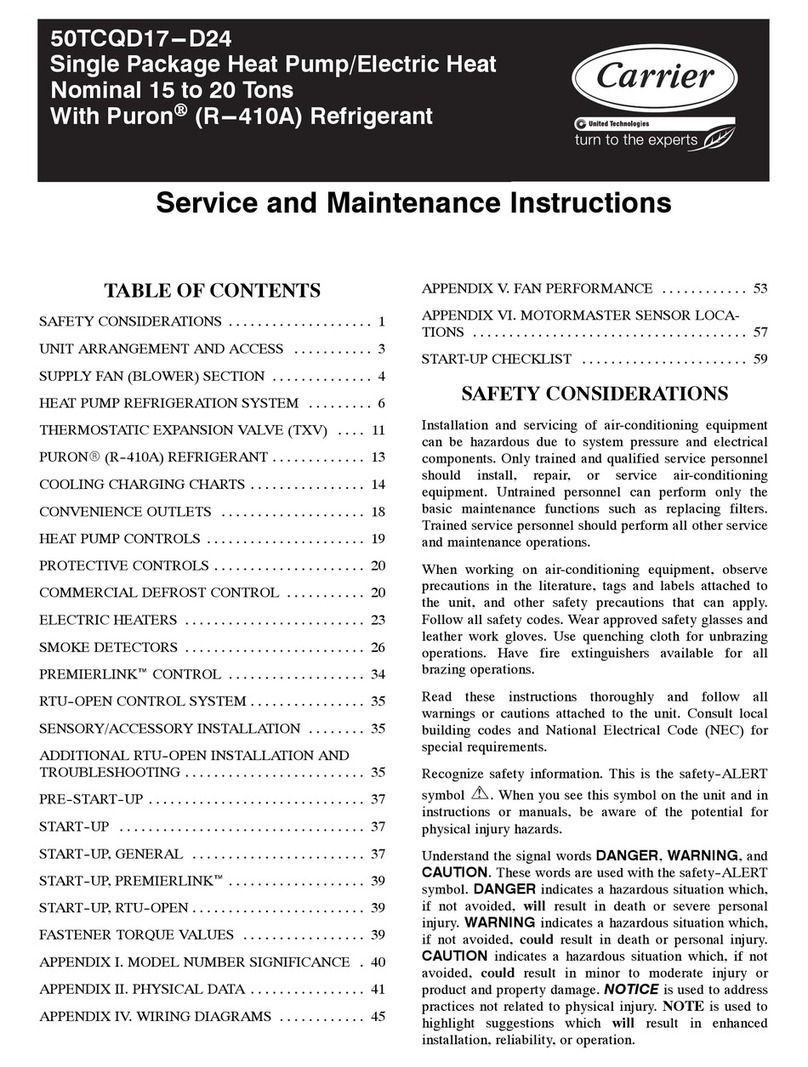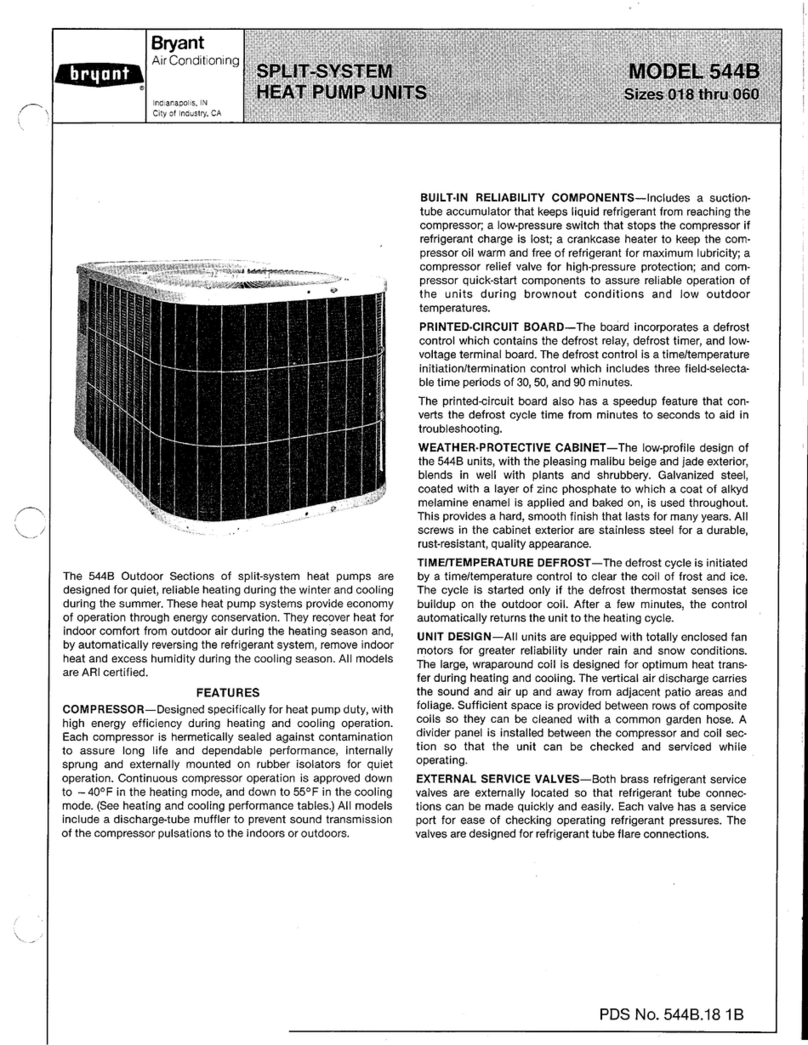
Step 13—Start-Up
To prevent compressor damage or personal injury, observe
the following:
•Do not overcharge system with refrigerant.
•Do not operate unit in a vacuum or at negative pressure.
•Do not disable low-pressure switch.
In scroll compressor applications:
•Dome temperatures may be hot.
To prevent personal injury wear safety glasses, protective
clothing, and gloves when handling refrigerant.
Back seating service valves are not equipped with Schrader
valves. Fully back seat (counter clockwise) valve stem before
removing gage port cap.
Federal regulations require that you do not vent refrigerant to
atmosphere. Recover during system repair or final unit
disposal.
Follow these steps to properly start up the system:
1. Fully back seat (open) liquid and vapor tube service valves.
2. Unit is shipped with valve stem(s) front seated (closed) and
caps installed. Replace stem caps after system is opened to
refrigerant flow (back seated). Replace caps finger-tight and
tighten with wrench an additional 1/12 turn. Use a backup
wrench on valve body flats to prevent distortion of sheet
metal.
3. Close electrical disconnects to energize system.
4. Set room thermostat at desired temperature. Be sure set point
is below indoor ambient temperature.
5. Set room thermostat to HEAT or COOL and fan control to ON
or AUTO mode, as desired. Operate unit for 15 minutes.
Check system refrigerant charge.
SEQUENCE OF OPERATION
NOTE: Defrost control board is equipped with a 5-minute lock-
out timer which may be initiated upon an interruption of power.
With power supplied to indoor and outdoor units, transformer is
energized.
Cooling
On a call for cooling, thermostat makes circuits R-O, R-Y, and
R-G. Circuit R-O energizes reversing valve, switching it to cooling
position. Circuit R-Y energizes contactor, starting outdoor fan
motor and compressor circuit. R-G energizes indoor unit blower
relay, starting indoor blower motor on high speed.
When thermostat is satisfied, contacts R-Y open, de-energizing the
contactor and blower relay. Compressor and motors should stop.
NOTE: If indoor unit is equipped with a time-delay relay circuit,
the blower runs an additional 90 sec to increase system efficiency.
Heating
On a call for heating, thermostat makes circuit R-Y and R-G.
Circuit R-Y energizes contactor starting outdoor fan motor and
compressor. Circuit R-G energizes indoor blower relay, starting
blower motor on high speed.
Should temperature in the dwelling continue to fall, R-W2 is made
through second-stage room thermostat. Circuit R-W2 energizes
supplemental electric heat. If outdoor temperature falls below
setting of outdoor thermostat (field-installed option), contacts
close to bring on an additional bank of supplemental electric heat.
When thermostat is satisfied, its contacts open, de-energizing
contactor and sequencer. All heaters and motors should stop after
all fan off delays.
Quiet Shift
Quiet Shift is a field-selectable defrost mode (factory set to OFF
position), which will eliminate occasional noise that could be
heard at the start of defrost cycle and restarting of heating cycle. It
is selected by placing DIP switch 3 (on defrost board) in ON
position.
When Quiet Shift switch is placed in ON position, and a defrost is
initiated, the following sequence of operation will occur. Revers-
ing valve will energize, compressor will turn off for 30 sec, turn
back on to complete defrost. At the start of heating after conclusion
of defrost reversing valve will de-energize, compressor will turn
off for 40 sec, before starting in the heating mode.
Defrost
The defrost control is a time/temperature control which includes a
field-selectable time period (Dip switches 1 and 2 on the board)
between defrost cycles of 30, 60, 90, or 120 minutes (factory set at
90 minutes).
To initiate a forced defrost, two options are available depending on
the status of the defrost thermostat.
If defrost thermostat is closed, speedup pins (J1) must be shorted
by placing a flat head screwdriver in between for 5 sec and
releasing, to observe a complete defrost cycle. When the Quiet
Shift is selected, compressor will turn off for two 30 second
intervals during this complete defrost cycle, as explained previ-
ously. When Quiet Shift is in factory default OFF position, a
normal and complete defrost cycle will be observed.
If defrost thermostat is in open position and speedup pins are
shorted (with a flat head screwdriver) for 5 sec and released,a
short defrost cycle will be observed (actual length is dependent
upon the selected Quiet Shift position). When Quiet Shift switch is
in ON position, the length of defrost is 1 minute (30 sec
compressor off period followed by 30 sec of defrost with com-
pressor operation). On return to heating operation, compressor will
again turn off for an additional 30 sec and the fan for 40 sec. When
the Quiet Shift is in OFF position, only a brief 30 sec cycle will be
observed.
If it is desirable to observe a complete defrost in warm weather, the
thermostat must be closed as follows:
1. Turn off power to outdoor unit.
2. Disconnect outdoor fan motor lead from OF2 on control
board. (See Fig. 14.) Tape to prevent grounding.
3. Restart unit in heating mode allowing frost to accumulate on
outdoor coil.
4. After a few minutes in heating mode, liquid line temperature
should drop below closing point of defrost thermostat (ap-
proximately 30°F).
NOTE: Unit will remain in defrost until defrost thermostat
reopens at approximately 80°F coil temperature at liquid line or
remainder of defrost cycle time.
5. Turn off power to outdoor and reconnect fan motor lead to
OF2 on control board after above forced defrost cycle.
7

